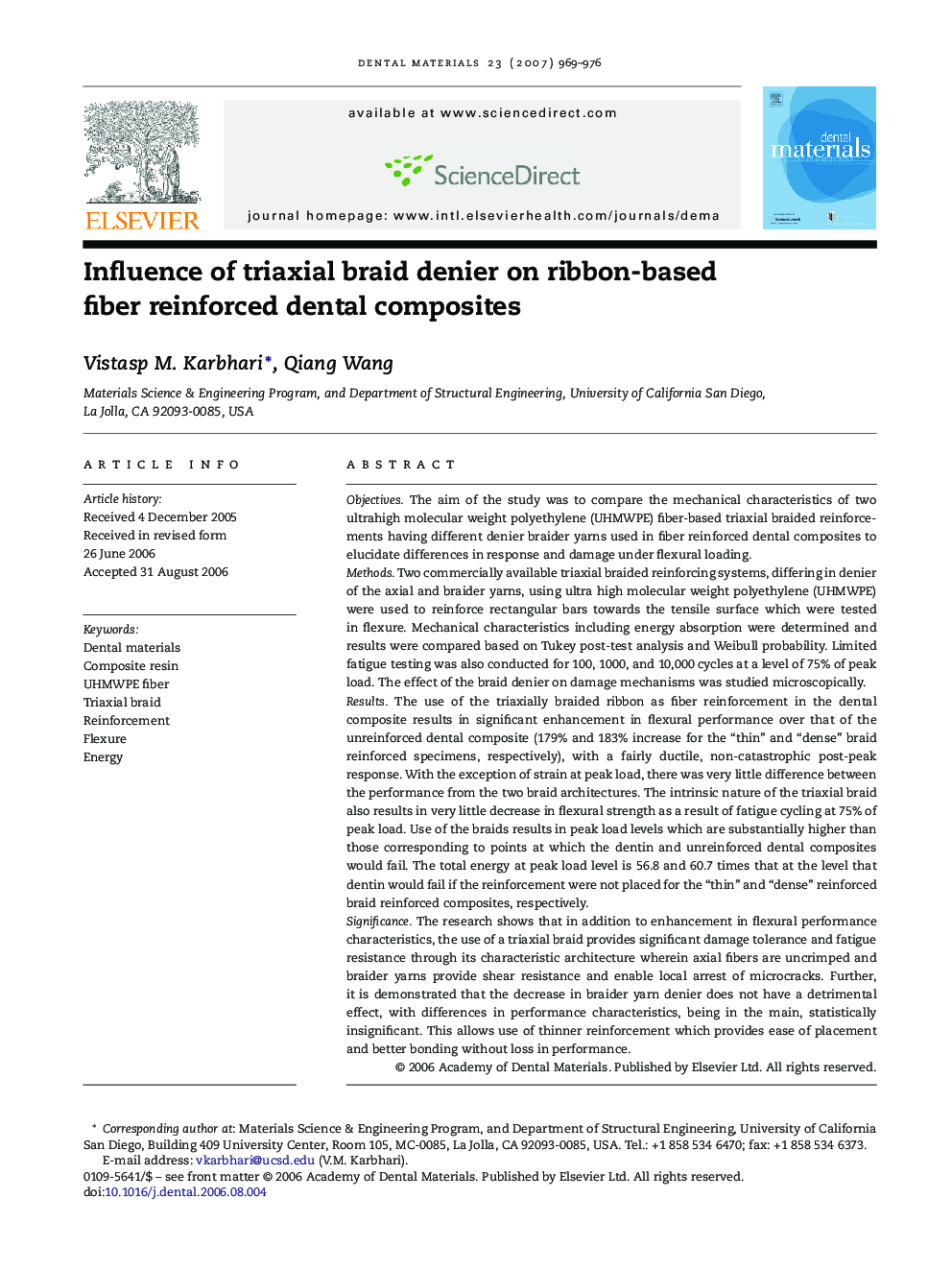| کد مقاله | کد نشریه | سال انتشار | مقاله انگلیسی | نسخه تمام متن |
|---|---|---|---|---|
| 1423313 | 986504 | 2007 | 8 صفحه PDF | دانلود رایگان |

ObjectivesThe aim of the study was to compare the mechanical characteristics of two ultrahigh molecular weight polyethylene (UHMWPE) fiber-based triaxial braided reinforcements having different denier braider yarns used in fiber reinforced dental composites to elucidate differences in response and damage under flexural loading.MethodsTwo commercially available triaxial braided reinforcing systems, differing in denier of the axial and braider yarns, using ultra high molecular weight polyethylene (UHMWPE) were used to reinforce rectangular bars towards the tensile surface which were tested in flexure. Mechanical characteristics including energy absorption were determined and results were compared based on Tukey post-test analysis and Weibull probability. Limited fatigue testing was also conducted for 100, 1000, and 10,000 cycles at a level of 75% of peak load. The effect of the braid denier on damage mechanisms was studied microscopically.ResultsThe use of the triaxially braided ribbon as fiber reinforcement in the dental composite results in significant enhancement in flexural performance over that of the unreinforced dental composite (179% and 183% increase for the “thin” and “dense” braid reinforced specimens, respectively), with a fairly ductile, non-catastrophic post-peak response. With the exception of strain at peak load, there was very little difference between the performance from the two braid architectures. The intrinsic nature of the triaxial braid also results in very little decrease in flexural strength as a result of fatigue cycling at 75% of peak load. Use of the braids results in peak load levels which are substantially higher than those corresponding to points at which the dentin and unreinforced dental composites would fail. The total energy at peak load level is 56.8 and 60.7 times that at the level that dentin would fail if the reinforcement were not placed for the “thin” and “dense” reinforced braid reinforced composites, respectively.SignificanceThe research shows that in addition to enhancement in flexural performance characteristics, the use of a triaxial braid provides significant damage tolerance and fatigue resistance through its characteristic architecture wherein axial fibers are uncrimped and braider yarns provide shear resistance and enable local arrest of microcracks. Further, it is demonstrated that the decrease in braider yarn denier does not have a detrimental effect, with differences in performance characteristics, being in the main, statistically insignificant. This allows use of thinner reinforcement which provides ease of placement and better bonding without loss in performance.
Journal: Dental Materials - Volume 23, Issue 8, August 2007, Pages 969–976